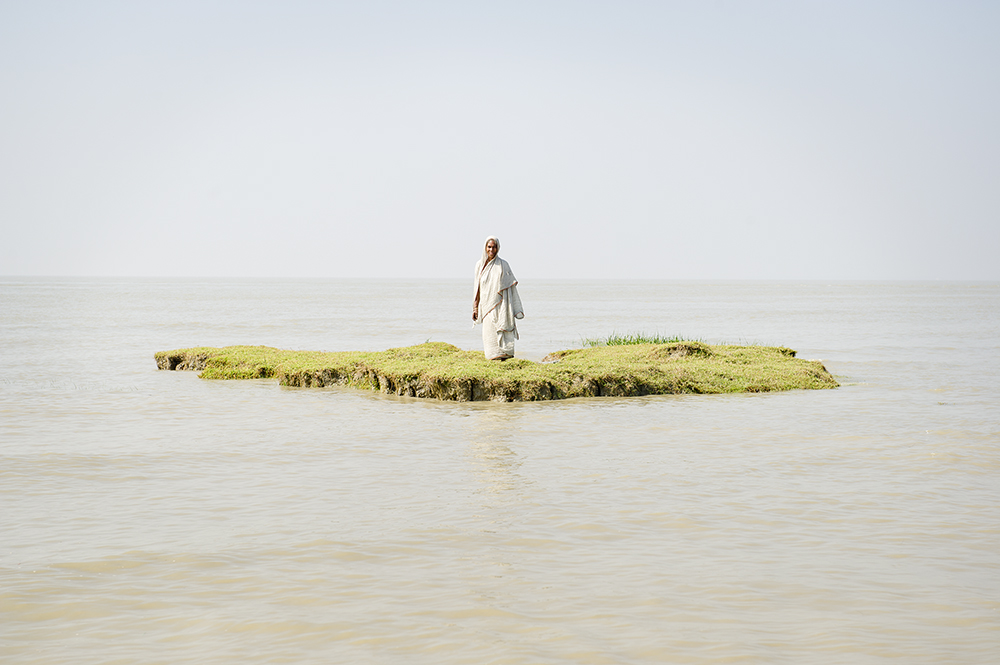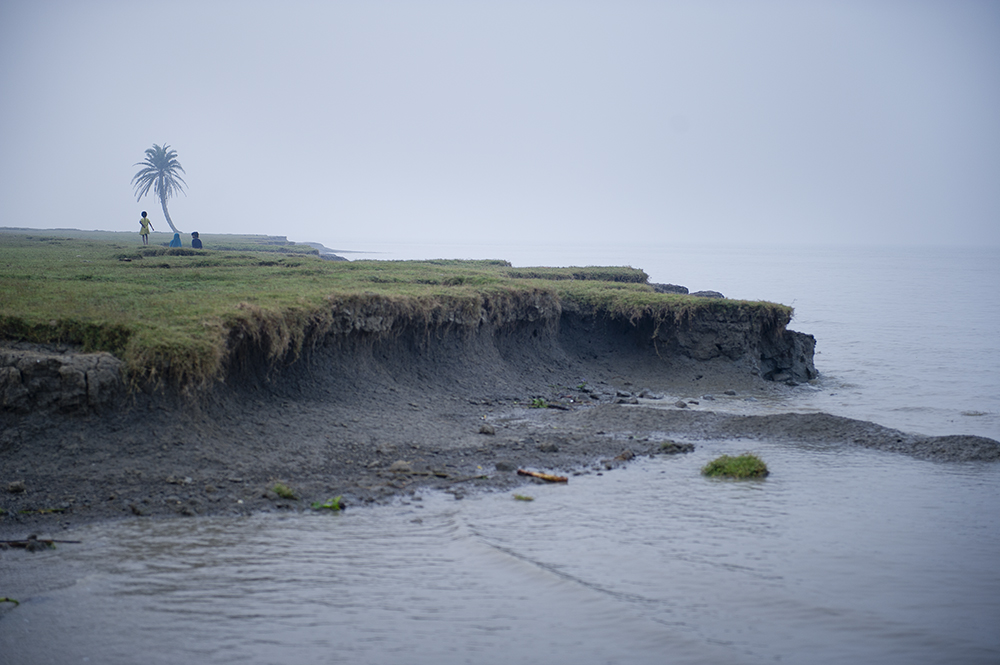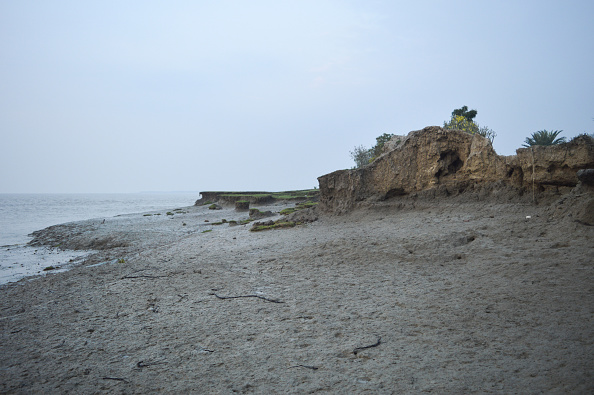Ghoramara Island, West Bengal
Overview: Ghoramara Island is an island in the South 24 Parganas, West Bengal. Ghoramara Island is located 150 km south of Kolkata. The island is small, roughly 5 km2 in area, in the advent of the Murigonga River also called Baratala River. It is quickly disappearing due to erosion and sea level
rise. Ghoramara island once had a population of 40,000. The 2001 Government of India census showed a population of 5,000 on Ghoramara; this population is believed to have shrunk as families are displaced by the island's sinking. As of 2016 when this post is written the island has 3,000 residents.
rise. Ghoramara island once had a population of 40,000. The 2001 Government of India census showed a population of 5,000 on Ghoramara; this population is believed to have shrunk as families are displaced by the island's sinking. As of 2016 when this post is written the island has 3,000 residents.
Threat: Islands Lohachara, Bedford, and New Moore lying to the southwest of Ghoramara have already been submerged and now Ghoramara is slowly being engulfed by the sea. Tuhin Ghosh of the School of Oceanographic Studies at Jadavpur University has been studying Ghoramara Island.
This is an estuary where saltwater from the Bay of Bengal mixes with freshwater from three of India's major rivers — the
Ganges, the Meghna & the Brahmaputra. The tides in the adjoining areas are so dramatic that about a third of the land disappears and reappears every day. That's been happening for centuries. But just in the past few decades, the changes have become more
extreme. In this delta, water levels are rising more dramatically than in other parts of the world — especially on the island of Ghoramara.
The sea level is rising as never before and frequent cyclones and storms are increasingly eroding inhabited lands. Most of the people from Ghoramara are destined to live as climate refugees in India without even being acknowledged as one.
I personally take this oppurtunity to request everyone to atleast pay heed to a not so interesting but a very important biotope. This Island is the living proof of the devastating effects of climate change (Global Warming). With rising sea levels, high tides and floods gradually swallowing the whole island.
 How to Reach: The journey from Kolkata to Ghoramara is more about the journey than distance- a train ride to Kakdwip, followed by a ride on a trekker and one have to cross Muriganga river which is a side stream of Ganges and connects the island to nearest harbour Kakdwip.
How to Reach: The journey from Kolkata to Ghoramara is more about the journey than distance- a train ride to Kakdwip, followed by a ride on a trekker and one have to cross Muriganga river which is a side stream of Ganges and connects the island to nearest harbour Kakdwip.
Lodging: There is no hotel as such to stay there one can approach the locals to staying in their houses.
WATER: pH 7.2-8.0, 10-20 dH, 75-82 F (24-28 C), 1.006-1.015 specific gravity
TANK: An open water biotope should provide plenty of open water to swim around. A clayey or loamy substrate can be used to mimic the natural conditions.
The seemingly plain and monotonous mud flats are in fact, anything but a vast estuary with teeming, dynamic, and fascinating ecosystem like none other on earth—and for the aquarist looking for something a bit ‘off the beaten path’, it represents a chance to create a truly unique aquatic environment.
Filter: One never regrets the money spent on a good filter – so take a little time deciding which kind you want, and get the best you can afford that suits your needs. There are a lot of different filter types available, but hanging filters and
canister filters are the most common styles. Neither filtering system is challenging to maintain; it will just come down to personal choice and cost. For clayey substrate it is
recommended to reduce amount of flow in the lower levels of the aquarium so as to reduce turbidity in the tank.
FLORA: There is not much of choice in this kind of biotope. Due to high turbidity in the water there underwater plants do not thrive.
extreme. In this delta, water levels are rising more dramatically than in other parts of the world — especially on the island of Ghoramara.
The sea level is rising as never before and frequent cyclones and storms are increasingly eroding inhabited lands. Most of the people from Ghoramara are destined to live as climate refugees in India without even being acknowledged as one.
I personally take this oppurtunity to request everyone to atleast pay heed to a not so interesting but a very important biotope. This Island is the living proof of the devastating effects of climate change (Global Warming). With rising sea levels, high tides and floods gradually swallowing the whole island.
 How to Reach: The journey from Kolkata to Ghoramara is more about the journey than distance- a train ride to Kakdwip, followed by a ride on a trekker and one have to cross Muriganga river which is a side stream of Ganges and connects the island to nearest harbour Kakdwip.
How to Reach: The journey from Kolkata to Ghoramara is more about the journey than distance- a train ride to Kakdwip, followed by a ride on a trekker and one have to cross Muriganga river which is a side stream of Ganges and connects the island to nearest harbour Kakdwip.Lodging: There is no hotel as such to stay there one can approach the locals to staying in their houses.
BIOTOPE INFORMATION
WATER: pH 7.2-8.0, 10-20 dH, 75-82 F (24-28 C), 1.006-1.015 specific gravity
TANK: An open water biotope should provide plenty of open water to swim around. A clayey or loamy substrate can be used to mimic the natural conditions.
The seemingly plain and monotonous mud flats are in fact, anything but a vast estuary with teeming, dynamic, and fascinating ecosystem like none other on earth—and for the aquarist looking for something a bit ‘off the beaten path’, it represents a chance to create a truly unique aquatic environment.
Filter: One never regrets the money spent on a good filter – so take a little time deciding which kind you want, and get the best you can afford that suits your needs. There are a lot of different filter types available, but hanging filters and
recommended to reduce amount of flow in the lower levels of the aquarium so as to reduce turbidity in the tank.
FLORA: There is not much of choice in this kind of biotope. Due to high turbidity in the water there underwater plants do not thrive.
FAUNA: Most species have adapted to live in a brackish or euryhaline environment, their feeding and even reproductive strategies are synchronized with the seasonal and tidal variations. Fishes like Anguilla bengalensis (Indian mottled eel), Scatophagus Argus (Spotted scat), Datnioides polota
(Silver Tiger Perch), and a lot of other options are available.
Also shrimps and lobsters as Ghost shrimp (Palaemonetes sp.), Macrobrachium sp., Penaeus monodon (Bagda Prawn) are pretty much common in this area.












No comments:
Post a Comment